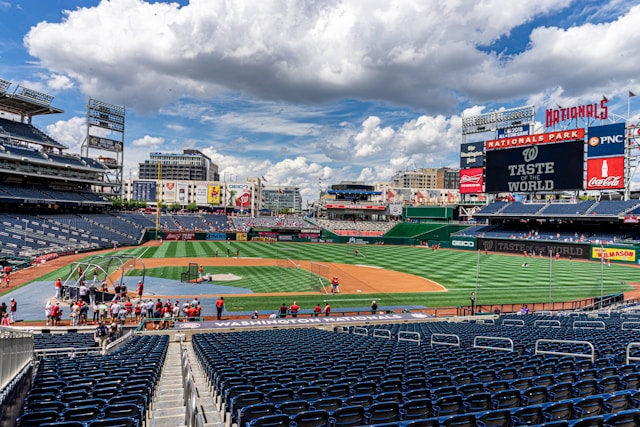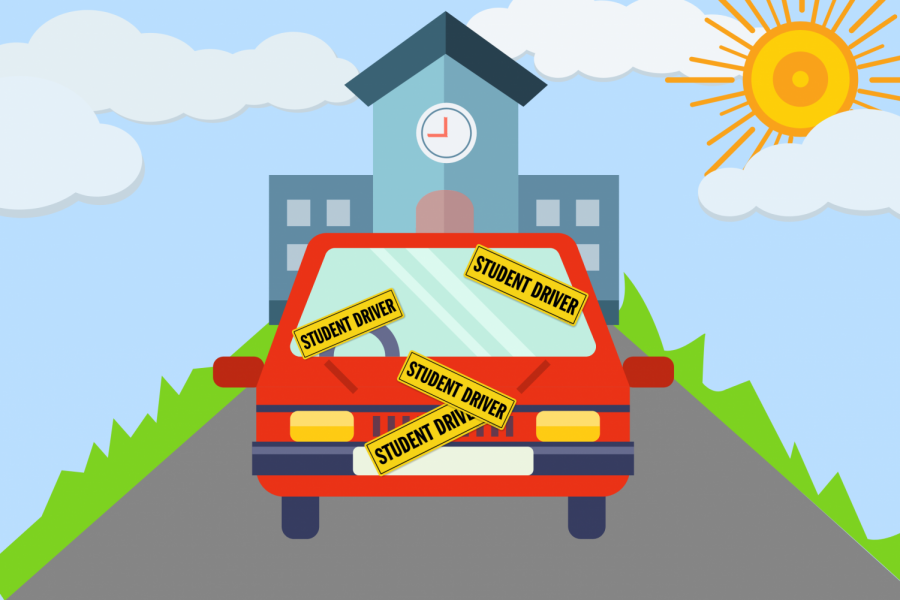String of fatal bike accidents brings renewed calls for change
A recent rise in bike-related deaths throughout Montgomery County has shifted public interest toward protecting bikers on open roads.
February 13, 2023
On the afternoon of Aug. 25, diplomat Sarah Langenkamp mounted her bicycle and began a leisurely ride home from an open house at her son’s elementary school. As she rode past the American Plant store on River Road, the 42-year-old Bethesda resident entered the street’s narrow bicycle lane — but the vehicles driving beside her were unpredictable.
Langenkamp died after a flatbed truck struck her in the 5200 block of River Road. In July of 2022, three other cyclists lost their lives in the Washington D.C. area.
In the following months, the cyclist’s tragic death sparked a renewed ambition for bike safety preservation. Bethesda locals care about their community’s security, and incidents like these are often immediate calls for action. Bike safety has been a persistent issue in Maryland since the invention of automobiles. Both national and local governments prioritize efficiency for cars on the road over protection for cyclists.
Since Langenkamp’s death, her husband, Dan Lagenkamp, has raised more than $300,000 for a bike safety memorial fund in her name, which advocates for safer bike routes in urban areas, including the DMV. Hundreds of community members held an advocacy ride on River Road 10 days after the accident as a tribute to the late cyclist. Additionally, around a thousand members participated in the 10.5-mile Ride For Your Life event on Nov. 18, organized by Dan to stress the importance of implementing safer roads. Riders honored her life by attaching a white painted “ghost bike” to a pole near the site of the accident.
Local government agencies and community organizations’ efforts to reform roadway policies have been underway for more than 80 years, but the exceptionally slow process of reform makes change difficult to achieve, said Montgomery County Department of Transportation (MCDOT) Project Planner Matt Johnson.
Historically, local governments have flooded efforts into improving conditions for automobiles. The efforts include changes to traffic light systems, speed limits and road layouts.
“Our culture for 70 years has been to prioritize automobile traffic over walking and biking,” said MCDOT Bikeways Program Manager Patricia Shepherd. “There’s a behavioral issue, and we do work with police and our traffic team to have some educational brochures and campaigns.”
Shepherd leads the department’s Bikeways program, which provides links between parks, park trails and major state road trails. Her projects span the entire county, with major works in Bethesda, Silver Spring and White Flint.
The Department advocates for higher education standards for new drivers based on their knowledge of revamped road laws. Distributing informational brochures in public spaces is just one method utilized to spread the word, along with online forums and more. Additionally, the agency operates under the belief that advocates for an emphasis on the knowledge that everyone is a road user; cyclists are more vulnerable than someone driving a car, Shepard said.
Montgomery County is one of the first counties in the nation to implement a Vision Zero program, which aims to eliminate traffic deaths and severe injuries on the roads by adjusting roadway infrastructure designs and focuses.
However, a recent rise in bike-related deaths throughout Montgomery County has shifted the center of interest toward protecting bikers on open roads.
In May 2020, the Montgomery County Council approved the Capital Improvements Program (CIP), a six-year plan with a $6.3 billion budget that covers county-owned property and infrastructure, including parks, roads, bike lanes and more.
Since 2016, the Maryland Department of Transportation has been constructing a large bike network in Silver Spring, the Bicycle Master Plan, which stretches from downtown to the Montgomery College campus. The plan incorporates safe bike lanes throughout primarily urban districts.
“The goal is when it’s done, most people in downtown Silver Spring will either live or work within a block or two blocks of a low-stress bikeway,” Johnson said.
Low-stress bikeways refer to safe trail crossings for cyclists. Shepherd and Johnson’s respective projects paired with improved lighting, high visibility markings and sidewalk repairs display a safer outlook for cyclists and pedestrians.
The continuously-expanding network of designated bike lanes accommodates people commuting to and from school, workplaces and the metro.
Despite substantial countywide investments into bike safety infrastructure, riders like junior Ellie Tinsky still feel uneasy when cycling next to rapidly accelerating cars.
“Along River Road there is a bike lane, but cars are still moving very quickly,” Tinsky said. “So it’s always dangerous. There is always a risk.”
While Tinsky uses a mirror attachment and a loud horn on her bike, she said that the lack of bike safety features along main roads causes her to constantly check her surroundings and make sure she is in a safe space.
While there is some traffic safety advocacy amongst Bethesda residents, nothing has proven to effectively bring deadly crashes to a halt.
“I don’t think that anyone should have to die because they’re just going out to bike and have fun and enjoy themselves,” Tinsky said. “Things definitely need to be done to ensure more safety for cyclists in D.C. and the whole DMV.”
Similar to most metropolitan areas, the high-speed traffic in Bethesda — such as on River Road — only makes matters worse; the consequences of accidental impact increase with speed.
When a driver hits a pedestrian at 40 miles per hour, the pedestrian has about a 10% chance of survival, according to Johnson. When the driver’s speed reduces to 30 miles per hour, the chance of survival increases to 50%, and 90% at 20 miles per hour.
“Slower speed means the driver has more opportunity to avoid collision,” Johnson said. “And one of the most critical factors in crash survivability for a pedestrian or bicyclist is the speed at which they’re hit.”
These findings have informed new initiatives for speed reduction by the MCDOT to reduce speed limits and construct protected intersections, forcing drivers to slow down around biking areas. However, the MCDOT lacks the jurisdiction to implement projects in certain key locations, Matt Johnson said.
“We have to work with other agencies because we don’t control all the streets in the county,” Johnson said. “The big player in the room is the Maryland State Highway Administration (SHA).”
The administration can veto the MCDOT’s proposed regulations for all state roads that have a number as well as a name, including River Road. However, the state-level agency launched the Be Street Wise initiative in 2020, aiming to inform cyclists and motorists of their most helpful safety tips.
The County Council regularly monitors and modifies traffic lights, intersections, speed limits and bike lanes to reach zero fatal collisions by 2030.
“There are so many drivers in D.C. as people are going to and from work everyday. They need to be more mindful that people are also using the bike lanes to get places,” Tinsky said. “I’m just trying to get where I want to go.”











